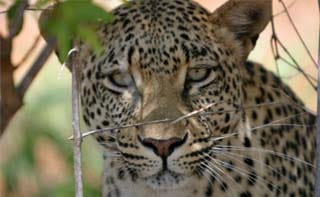Leopards in Pilanesberg

Characteristics
Males are usually 30% larger than the females. Shoulder height is 45-80cm, and head and body length 125-165cm. The males weigh between 30-91kg, as opposed to 23-60kg for females. The leopard’s body is long, with short legs. The rosettes are square and the coat is dark/golden. The fur on the underbelly is lighter and softer. Solid, black spots feature on the face, limbs and underbelly.
Behaviour
Leopards are extremely elusive, solitary and nocturnal. They are also powerful swimmers. The diet is varied, from dung beetles to male giant elands. Approximately 92 prey species have been noted in the leopard’s diet. The general diet includes monkeys, rodents, fish, birds, insects and reptiles. Competition for food includes lions, spotted hyenas and African wild dogs. The leopard can mate throughout the year, depending on the region. Females are pregnant for 90-105 days, and give birth to 2-4 cubs per litter. The cubs are born in caves, or hollow trees. Between 41-50% of cubs die within the first year. A cub may start hunting with the mother at 3 months, and feed themselves at 12 months. They may, however, stay with the mother until they are 18-24 months old.
